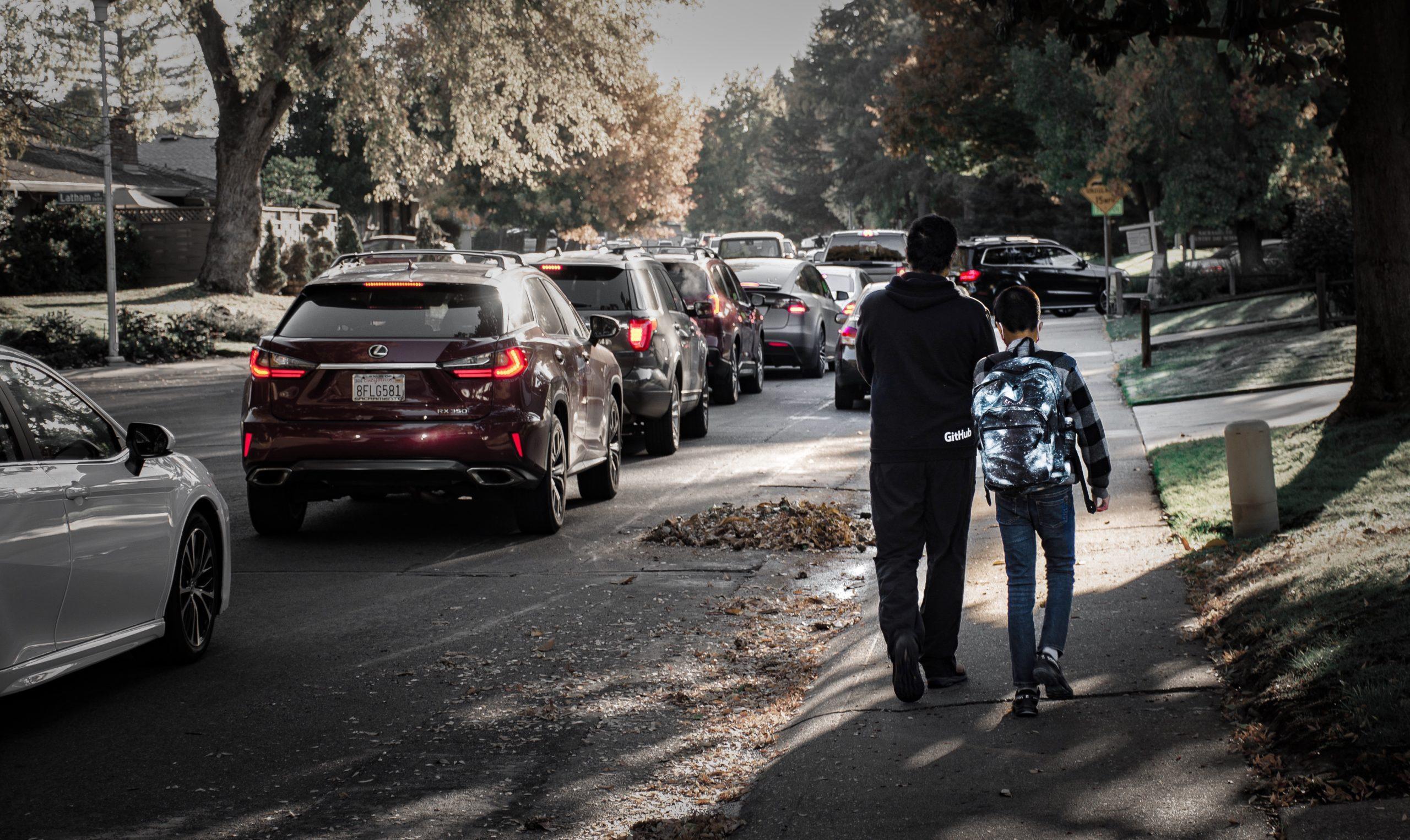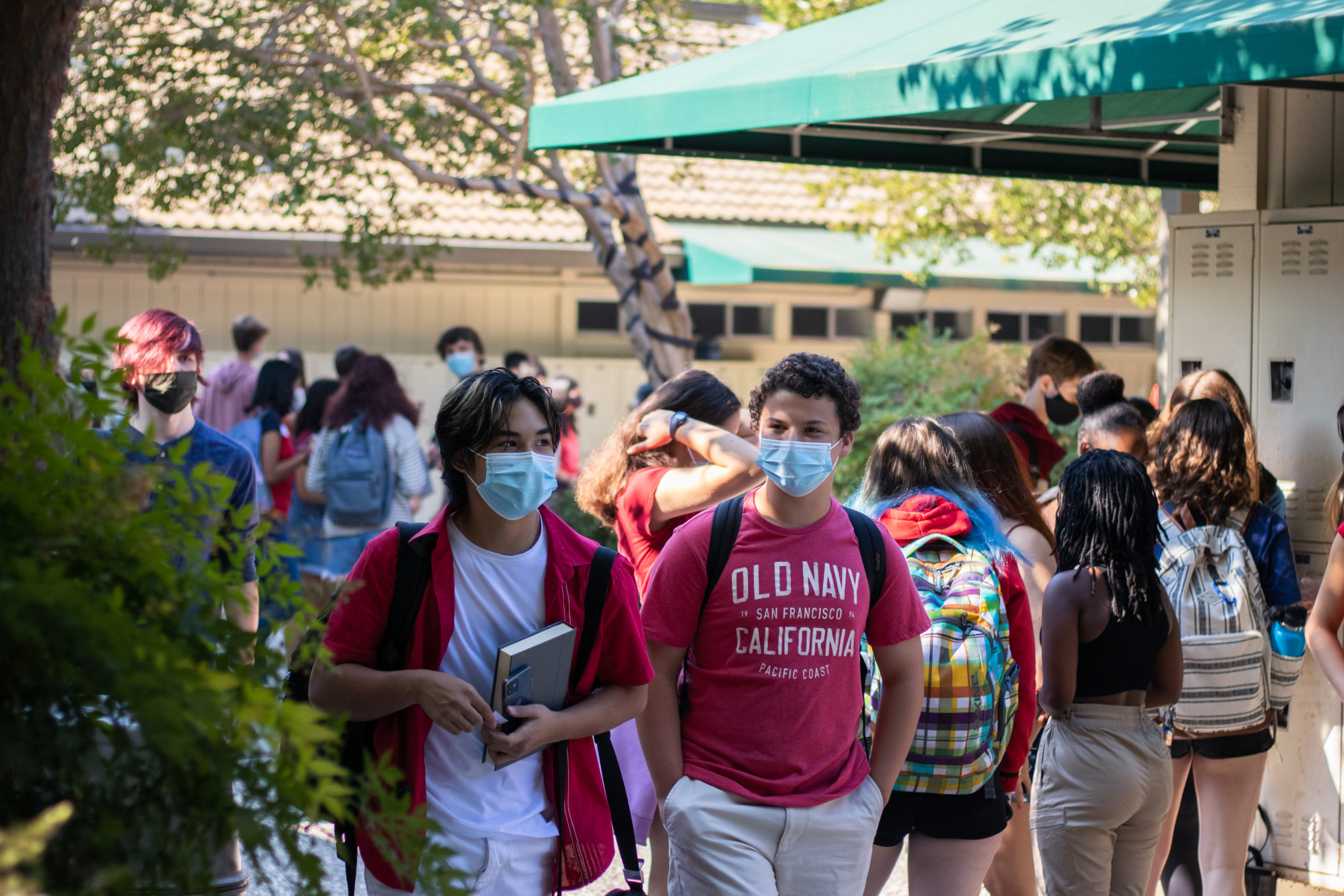Country Day has always been a small school, but it has plans to grow both its enrollment and buildings — contrary to what some local residents around SCDS want.
On Aug. 14, 2020, despite neighbor protest, the City of Sacramento removed an important limitation to growth by ruling in favor to modify the school’s Conditional Use Permit, which will increase SCDS’s enrollment cap and square footage limit.
This updated CUP was contingent on giving $150,000 toward the cost of installing a stoplight at Munroe Street and Latham Drive because Country Day contributes much of the traffic to the intersection.
Country Day met that financial condition in 2020. The traffic light has not been installed yet.
“Last I heard, that was projected to be started in the spring of 2023,” said Head of School Lee Thomsen. “But that’s out of our hands once we put our money toward it.”
The updated CUP allows Country Day to increase the amount of building space on campus. Eventually, the school wants to replace the MP room and middle school “L” building with two-story structures. These projects would be completed in around 10 years.
“My hope, optimistically, is that the board will, sometime in the next six to 12 months, authorize a capital campaign to raise money for projects, which would be one of those two buildings,” Thomsen said.
The school is currently auditing its advancement office; working alongside outside consultants to make sure that the capital campaign and school fundraising would be as successful as possible, Thomsen said.
“That audit will probably be done by the end of this spring,” he said.
Meantime, enrollment is rising slowly. Before the CUP was updated, the school was limited to 544 total students and 144 high school students. Now, the limit is 596 total students and 180 high school students and enrollment has already pushed past the old 544 cap.
“We are now at 547 or 548 students,” Thomsen said. “That’s the only significant change yet.”
The plan, according to Thomsen, is for the school to increase enrollment bit by bit every year until hitting the cap. Thomsen previously said it would take around seven to 10 years to hit the new cap.
In addition to providing money for the traffic light, the city asked the school to continue working with the neighborhood on managing traffic and parking.
“The neighbors obviously are concerned that if we have 46 more kids, that will make the traffic worse,” Thomsen said. “The school has always worked on that and we’re continuing to work on that.”
Traffic measures taken include prohibiting parking anywhere on Latham, staggering pickup times, having the Parents Association organize carpools and, in the future, setting up drop-off points on Munroe Street.
“According to the neighbors, who we meet with quarterly, they have said the traffic’s actually doing pretty well,” Thomsen said. “I have been pleasantly surprised that as we are coming out of COVID-19, the traffic increase has been minimal.”
Ann Evans, who wrote the initial protest to the CUP, praised the school for keeping on top of its mitigation efforts.
“The plan for having additional drop-off points that would not be on Latham sounds very, very positive. There hasn’t been the ability to go forward on that so far because of COVID-19, but in general, the school is enforcing well.”
However, one big point of contention remains between the school and the neighborhood: the Sierra Homeowners Agreement, signed in 1996, that also limits the school’s enrollment.
Both before and after the CUP was updated, Thomsen said the school has been trying to come to a new, negotiated agreement with the neighborhood.
The neighbors, Evans said, mainly want two things: first, to allow newer neighbors to sign and join the agreement; second, for the school to include a new permanent enrollment cap.
“There were around 60 neighbors who had signed on in 1996,” Thomsen said. “Since that time there’s only eight or nine neighbors left who are technically remaining signatories to the original agreement.”
The school agreed to allow newer residents to sign the agreement and sent an official revised draft to the neighbors in April, 2021. But that proposed agreement did not include a fixed enrollment cap. The neighbors did not respond.
“As long as no permanent enrollment cap is included, a modified agreement will not be possible,” Evans said. “Lee said that the school’s attorneys wouldn’t allow it, so there’s no reason to respond back. We said it was not even worth discussing.”
The neighborhood wants some sort of permanent cap because, in Evans’ words, the school is on a fixed-size property with no room for physical growth and can only deal with parking and drop-off by keeping numbers down.
But without an agreement with the neighbors, the school must either constrain expansion or violate the Sierra Homeowners Agreement at risk of being sued, although Evans has said in the past that the neighbors did not wish to sue the school.
For now, both sides remain locked in a stalemate.
— By Nihal Gulati



